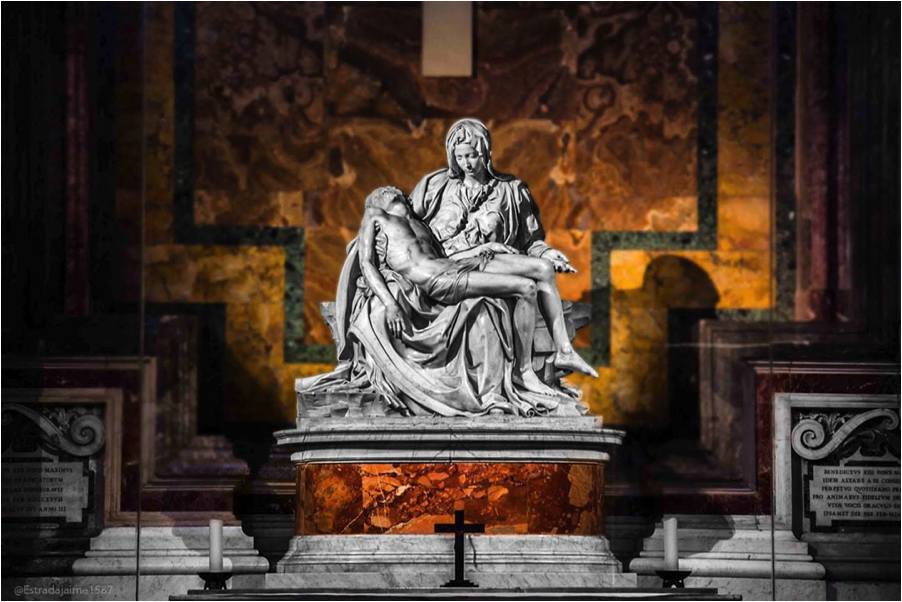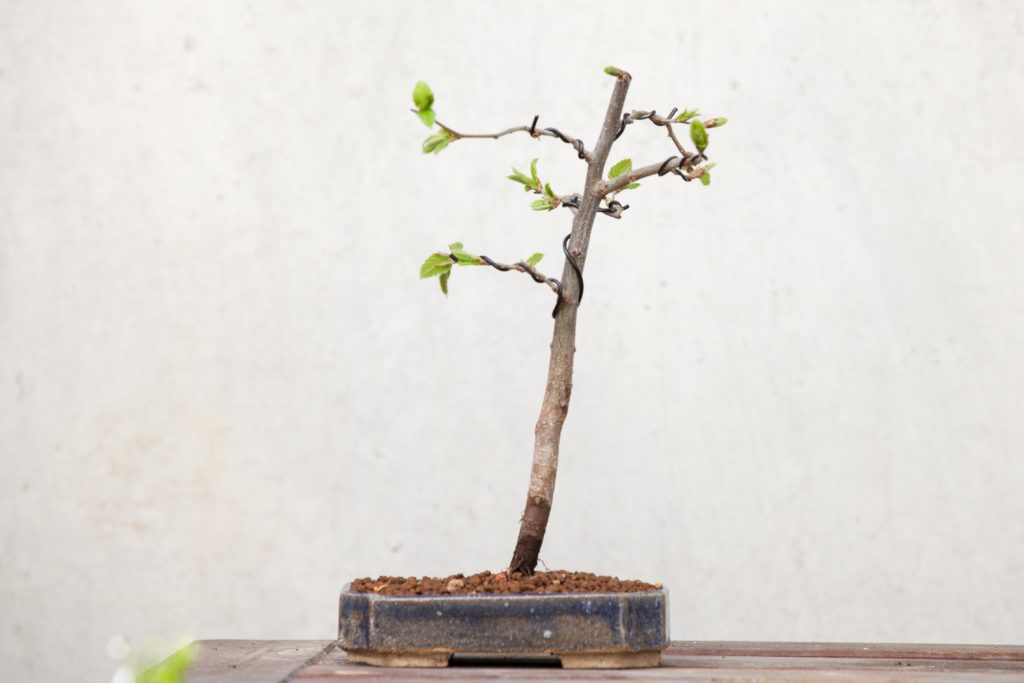Natural Selection

When French Cardinal Jean Bilhères de Lagraulas commissioned Michelangelo to sculpt La Pietà, the maestro sent his apprentices out to find the stone or marble to make the grand statue. A few hours later Giuseppe, a new apprentice, returned with a child’s toy marble. Michelangelo yelled down from his scaffold, “Giuseppe, cosa c’è di sbagliato in te. Come farò questa statua da un ciottolo?“ We can liberally translate this as “Guiseppe, what’s wrong with you? How can I make a grand statue with a pebble?”
Like the maestro 500 years ago, bonsai artists face the same question. How to make a fine tree from stick in a pot? Selecting the raw material for a bonsai takes some knowledge and foresight, skills that bonsai artists need to develop. Let’s examine the factors and process in choosing raw material. Hopefully this process will speed you on the way so you are no longer Guiseppe but a budding maestro.
Let’s start by saying any tree with small leaves can be made into a bonsai. However, it may take valuable resources including the most precious resource – time. By that I mean one could take a small straight cutting and with 50 years grow a magnificent tree. While bonsai requires patience there are finite limits, at least in one person’s lifetime. Sticks in pots also consume space, use water and fertilizer. None of these commodities are cheap in our debt-crazy inflation-ladled society. And waiting for a stick to grow may not keep ones’ interest in bonsai long enough to develop the skills needed to create fine trees.

As people approach bonsai they go through phases. In the first phase interest peaks and a person may buy a nursery plant and try to make a bonsai from it. There is little consideration of the ultimate tree design; it’s a desire to grow a tree. One can’t discount this phase however as growers need to learn how to keep the plant alive in a pot. It is rare for a bonsai artist to have their very first bonsai tree live more than a few years – because growing them on top of a TV indoors kills them. Let’s assume now that keeping the tree alive is not the main concern. The artist’s development phase now focuses on artistic desires. How to select that next tree for your collection (Remember bonsai trees are like potato chips, no one can have just one.)
The first thing to consider when selecting a tree is what phase in the bonsai art cycle do you want this tree –finished tree versus raw material? Bonsai artists have a big advantage over other artists as you can trade cash for a finished tree. There are not many endeavors in life where you can buy time but that is exactly what happens here. Trees continually grow and change; an artist will eventually put their stamp even on a finished tree. Reasons for selecting a finished tree span an infinite variety depending on personal taste, other trees in your collection, climate, budget, size and space. In well developed bonsai markets like Japan or Taiwan finished trees trade hands all the time and one professional may buy a show-able tree from another as they see some potential or ability to make a profit.

But most artists want to make their own trees, so lets go to the opposite end of the bonsai art cycle and start with raw material. How to select raw material? The first consideration is what is the goal of this raw material. Do you simply want to have fun growing a tree as its partner for 25 years? Or do you want to be able to show the tree in a competitive exhibition in 2 years or 5 years. Bonsai do take time to develop. How much time do you want to devote to this raw material before you hit your goal?
The next factor is size. How big do you want the tree to be? Bonsai development can be both reductive (i.e. remove material like Michelangelo carving stone) or additive (like adding clay to a sculpture). This means you can cut down a big tree to make a small tree or you can grow a seed or cutting into a big tree. When picking raw material think about the ultimate size. Small trees can develop quicker than big trees but smaller trees need more impact and hence the trunks and roots need to have some interesting characteristics. Sharp movement, wide roots, interesting scars all add artistic dimension to a tree. Large trees take u more space and resources, need more time to develop but usually offer more visual impact. However, even large trees need design features to be interesting. A large straight trunk may be boring until you take a few years to develop interesting branching and taper or wider roots. Whether large or small there are no short cuts when developing bonsai trees from uninspiring raw material.
Rate of growth is another factor. A fast growing tree will give satisfaction to many in our instant gratification culture (instant with bonsai is relative). Slow growing trees like Japanese Black Pine (Pinus thunbergi) may mean the raw material you select needs to be further along the development cycle or a longer term plan. Fast growing trees like the Headache Tree (Premna obtusifolia) or Cuban Laurel Fig (Ficus microcarpa) mean you can start with more modest material

Where the tree will live also impacts raw material. In Brevard county we have to select from the wonderful range of tropical trees with only a few temperate trees at our disposal. Any tree that needs a cold dormant period will not live long in our wonderful mild climate. Try to avoid zone envy and grow trees native or at least compatible with the local agricultural zone.
Procuring the raw material offers several options. A bonsai nursery offers the simplest place to start. Most bonsai nurseries do lots of the grunt work and prepare material intended to be bonsai, i.e. small leaves, the species can live in a pot and can live in your area, etc. Unfortunately bonsai nurseries are not that common. Garden centers offer material but caveat emptor in that most garden center material is “boring” when it comes to bonsai. Straight trunks or wimpy cuttings will put you on a long-term development path. You could always put the boring material in the ground for several years and work on it while it grows wild. BSOB, our bonsai club, and the members are a great source. Trees brought to the raffle table or offered from other member’s collection can provide good starting material. The Internet sometimes has sellers offering trees on auction sites or through nurseries. Price and shipping can be daunting and of course, on the Internet caveat emptor really applies. Finally collecting trees from the wild offers the potential for awesome material but the ethics of collecting can pose problems if not done responsibly (face it, the dirty little secret of bonsai is many collected trees have been stolen from the wild.) Urban landscapes offer options and homeowner frequently want “old nasty trees removed.” Cue the bonsai artist.

As in humans, character in bonsai takes time to develop. This should be the final aspect of selecting raw material. If you want to make a great tree in a reasonable amount of time you need to find raw material with character. Curves, scars, crazy branches, wide roots, deadwood, beautiful flowers, fat trunks, and taper are all things to look for when searching. The less interesting a tree is initially the more work and time it will take to be a bonsai. Michelangelo didn’t make La Pietà from a pebble and you really should not expect to make a nice bonsai from uninteresting material either.
